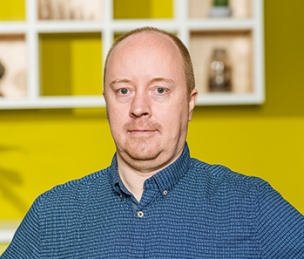Displaying 1 - 11 of 11
-
Drude, S., Stehouwer, H., Trilsbeek, P., Broeder, D., & Sloetjes, H. (2013). Language documentation and the language archive as e-humanities centrum. Poster presented at the Soeterbeeck eHumanities Workshop, Ravenstein, The Netherlands.
-
Drude, S., Broeder, D., & Trilsbeek, P. (2013). The Language Archive as a centre of the Clarin infrastructure. Talk presented at the 2nd INNET Conference on Digital Language Archiving. Gniezno, Poland. 2013-09-06 - 2013-09-07.
-
Trilsbeek, P., Koenig, A., & Drude, S. (2013). The Language Archive. Poster presented at the 3rd International Conference on Language Documentation and Conservation (ICLDC), “Sharing Worlds of Knowledge", Honolulu, Hawaii.
-
Ringersma, J., & Trilsbeek, P. (2010). Metadata and language-resources. Documentation and Archival Training Workshop. Guwahati, Assam, India, 2010-02-04 - 2010-02-08.
Abstract
Teaching material on Metadata for the Documentation and Archival Training Workshop Guwahati, Assam, India -
Wittenburg, P., Trilsbeek, P., & Lenkiewicz, P. (2010). Large multimedia archive for world languages. Talk presented at the ACM Workshop on Searching Spontaneous Conversational Speech [SSCS 2010]. Firenze, Italy. 2010-10-25 - 2010-10-29. doi:10.1145/1878101.1878113.
Abstract
In this paper, we describe the core pillars of a large archive oflanguage material recorded worldwide partly about languages that are highly endangered. The bases for the documentation of these languages are audio/video recordings which are then annotated at several linguistic layers. The digital age completely changed the requirements of long-term preservation and it is discussed how the archive met these new challenges. An extensive solution for data replication has been worked out to guarantee bit-stream preservation. Due to an immediate conversion of the incoming data to standards -based formats and checks at upload time lifecycle management of all 50 Terabyte of data is widely simplified. A suitable metadata framework not only allowing users to describe and discover resources, but also allowing them to organize their resources is enabling the management of this amount of resources very efficiently. Finally, it is the Language Archiving Technology software suite which allows users to create, manipulate, access and enrich all archived resources given that they have access permissions. -
Müller, G., Trilsbeek, P., & Van Uytvanck, D. (2008). Metadata-driven Community Portal. Talk presented at DOBES Workshop "Language Documentation Methods in Focus". MPI Nijmegen.
-
Ringersma, J., & Trilsbeek, P. (2008). Sharing linguistic multi-media resources at different complexity levels. Talk presented at IASA. Sydney. 2008-09-19.
-
Trilsbeek, P. (2008). Language Archiving at the MPI for Psycholinguistics. Talk presented at TAPE Fachtagung "Presentation and Access of Audiovisual Collections". Deutsche Kinemathek, Berlin. 2008-01-24.
-
Trilsbeek, P. (2008). Language Archiving Technology at the MPI for Psycholinguistics. Talk presented at Saami Documentation and Revitalization Workshop. Tromsø, Norway. 2008-02-28.
-
Trilsbeek, P., & Van Uytvanck, D. (2008). Regional archives and community portals. Talk presented at International Association of Sound and Audiovisual Archives Annual Conference. Sydney. 2008-09-14 - 2008-09-19.
Abstract
During the past 10 years, the Max Planck Institute for Psycholinguistics has developed an extensive technological framework around its digital archive for linguistic resources. About two years ago the MPI started installing archives based on this "Language Archiving Technology” (LAT) framework in various locations around the world. The idea behind this initiative is to have regional archives in the proximity of the area where the linguistic resources are collected. This will facilitate access to the resources and create more local involvement and awareness towards the preservation of endangered languages and cultures. The user interfaces of some of the LAT tools are not always very suitable for the speech community due to the language that is being used (English) and the extensive set of features of these tools, many of which are of less interest to the speech community. Therefore a framework was developed that allows the integration of archived content within a web portal that is managed using a standard Content Management System (Plone). A web service was developed that enables searching of the archive’s metadata database using the SOAP protocol. From within the CMS, the content editor can easily specify queries for specific metadata values, e.g. all songs in a particular language. These queries can be linked to buttons or images in the portal. The search results are then parsed into nicely formatted lists of resources. The facility will make the use of the local archive more efficient and user friendly. www.lat-mpi.eu www.mpi.nl/dobes www.plone.org -
Trilsbeek, P., Schäfer, R., Schüller, D., Pavuza, F., & Wittenburg, P. (2008). Video encoding and archiving in field linguistics. Talk presented at International Association of Sound and Audiovisual Archives Annual Conference. Sydney. 2008-09-14 - 2008-09-19.
Abstract
Technological innovation is continuously creating new encoding formats for video. The introduction of HDTV, the wish to move towards 3D video etc will increase the required bandwidths and capacities by factors. New coding standards such as H.264 and JPEG2000 have been developed to overcome the problem of increasing bit rates and new codecs such as H.265 are in the pipeline. In addition we have seen in the recent decades that the maintenance of old formats is not guaranteed if their markets become too small.
This extreme innovation rate is problematic for all archiving intentions, since archiving means guaranteeing continuous accessibility of the archived digital resources. It is known that a continuous migration will be required to interpret stored video streams. At the bit-stream level migration to new storage technology can be organized by fully automatic procedures. At the encoding level problems are much more severe. When migrating compressed video for example we will be confronted with concatenation effects creating serious artifacts. Ideally we would like to store uncompressed or lossless compressed video so that we have a master copy from which we can generate the various presentation formats. Currently, frequently MPEG2 is used for this purpose although it does not prevent information degradation due to concatenation. We will argue for a move to lossless JPEG-2000 encoding as master format and proper process metadata description. Yet we have to solve the dilemma that field workers will deliver highly compressed formats due to the usage of consumer equipment also in future.

Share this page